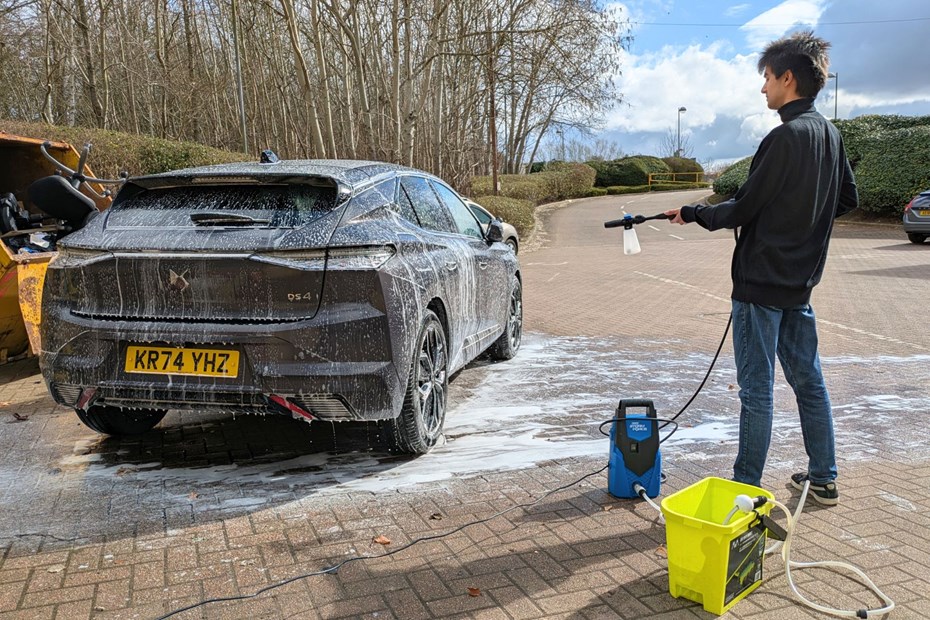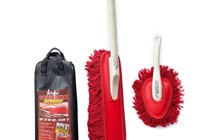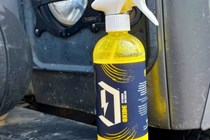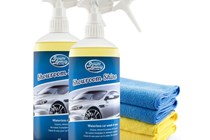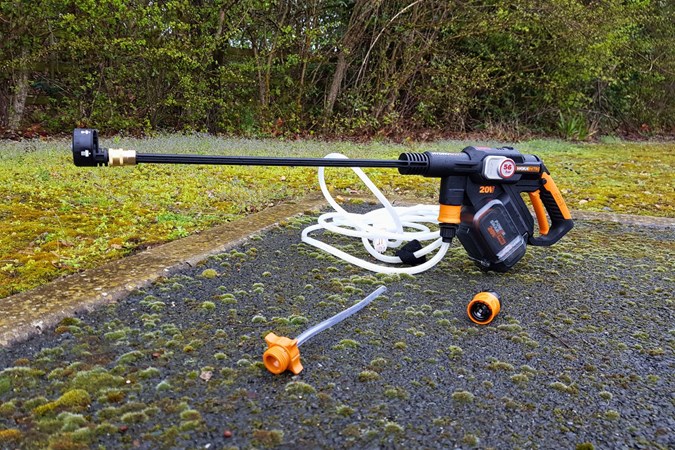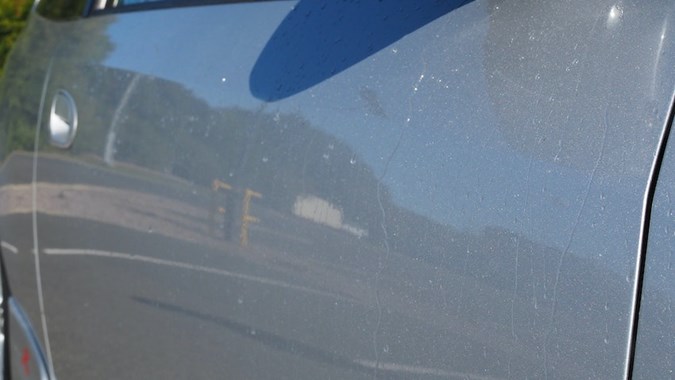Entering the warmer months means one thing – car wash time. However, the declaration of drought accompanied with hosepipe bans means the traditional car cleaning methods may not be an option for some regions around the UK in parts of 2025. A hosepipe ban means no filling the paddling pool, switching on the sprinklers or washing the car. Any use of the mains water supply is banned, which at first, may lead you to think pressure washers are part of the ban. But if you’re clever, that doesn’t have to be the case.
We’ve wracked our brains to work out the best ways to keep your car clean that doesn’t involve using any mains water supply. In fact, we would like to say we have perfected the art of cleaning your motor without a drop of water. That’s why we have compiled a guide full of our top tips and the best tried and tested products to help you keep your car clean during this dry spell.
How to clean your car without using a hosepipe
The easiest way to wash a car without using a hosepipe is by having a cordless pressure washer hooked up to a bucket of water. We also love cordless units because you don’t have to worry about an outside plug socket or a series of extension leads. When washing the vehicle itself, it’s best to have another two buckets: one full of soapy shampoo solution of your choice and the other full of plain water for rinsing.
When washing a car, consistency is key. For the best results, it’s crucial that the same diligence applied to the first panel is also applied to the last – that means using a clean wash mitt throughout.
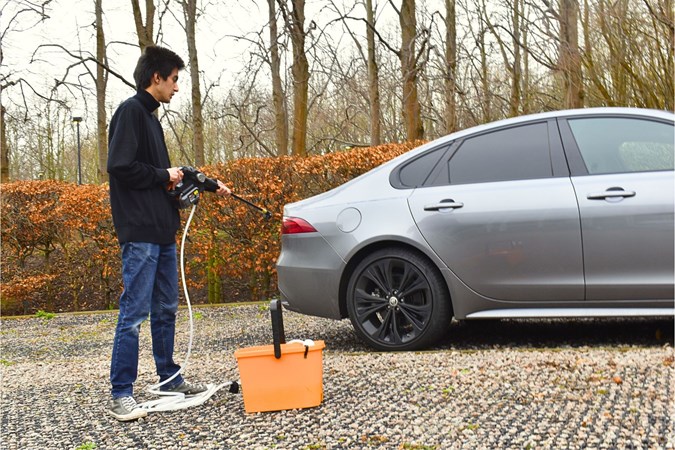
By keeping a bucket of clean water on hand, you can keep rinsing your washing utensils to limit the risk of paint swirls. Without due care, particulates may return to the surface of the paint via your washing sponge or mitt, so keep it clean to give your car’s paint the best chance.
When does the hosepipe ban start?
Yorkshire Water has already declared a hosepipe ban as of 11 July 2025, which affects much of Yorkshire, parts of Derbyshire, and parts of Lincolnshire.
South East Water has issued a temporary hosepipe ban that’ll be enforced on 18 July, affecting 1.4 million residents across the Sussex and Kent regions.
Thames Water said a hosepipe ban is to come into effect from 22 July which affects users in Gloucestershire, Oxfordshire, Berkshire, and Wiltshire. The postcodes affected are those beginning with OX, GL, SN, RG4, RG8, and RG9.
There are currently no other announcements of further hosepipe bans for other parts of the country but we will keep this page updated with any further information.
Who is exempt from the hosepipe ban?
The affected areas of the current and upcoming hosepipe bans include users in parts of Yorkshire, Lincolnshire, Derbyshire, Gloucestershire, Oxfordshire, Berkshire, Wiltshire, Kent and Sussex. The rest of the UK is currently exempt from the hosepipe ban.
You can find out whether you are affected by inputting your postcode into Water UK’s postcode checker, which will forward you to your local water supplier.
Can I wash my car during a hosepipe ban?
It is possible to wash your car during a hosepipe ban, but you just have to be clever about it. Rather than use a hosepipe or connect your pressure washer to the outside water tap, you can simply fill a huge bucket up of water and place the pressure washer hose at the bottom.
If you’re stuck for an outside cord, a cordless pressure washer is a great shout. We regularly used a Worx Nitro Hydroshot WG633.E with only a bucket of water as our supply. This is a great way to get around the hosepipe ban – and undoubtedly our most recommended option.
Can you use watering can during a hosepipe ban?
Provided you fill it up using the sink, you can use a watering can during a hosepipe ban to keep your plants in check. Hosepipes use a consistent amount of water when in operation, which is why they’re banned across parts of the country in order to save water.
Protection is your best ally
A long-lasting coating of paint protection is the single best line of defence for keeping your car clean during a water shortage. Whether it be a robust car wax, sealant, ceramic, or fancy graphene option, a protected car will offer a tiny layer of protection against surface-level scratches. This means that the light dust that often settles on a car during the summer months should be able to be removed without the need for water and without leaving scratches on a car’s clear coat.
A car duster is the best way to remove this surface-level dust and keep your car looking clean. Made with longer handles and a longer pile than a normal duster to separate the particles from the paintwork, these tools are the perfect way to get a clean car during a drought.
The best cordless pressure washer
Simply connect it to a bucket of water and enjoy plenty of battery life. For me on previous occasions, it's lasted up to four car washes on a 4.0Ah battery - or roughly 70-90 minutes in normal operation.
Once dusted, you can give the car a quick spray with a quick detailer to ensure that the paintwork maintains a deep gloss before finishing up. The beauty of a quick detailer is that you spray it on and buff it with a microfibre towel, with no need for water.
The best quick detailer for waterless car care
Best of all, this shine-in-a-bottle also offers eight weeks of hydrophobic paint protection. This not only ensured the gloss of the paint didn't disappear the moment you drove anywhere but would also aid it when it came time to dust the product. It's an excellent product that I'd happily keep in my boot all year round, not just during a heat wave.
Ryan Gilmore
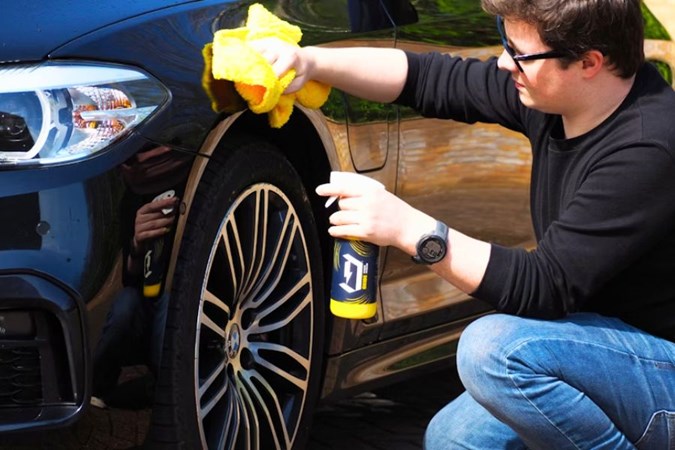
Pros
- Excellent value for money, a little goes a long way
- The ceramic tech really does help keep your car cleaner for longer
- The gloss enhancement is stunning to behold
Cons
- You cannot apply it in direct sunlight
- The trigger design could do with improving
This method won’t be any good if your car isn’t already coated, as you’ll need to thoroughly wash and decontaminate the paintwork before you protect the car, a method that undoubtedly requires a lot of water. Don’t fret, though. If your car isn’t protected or reasonably dirty, there is still a way to get it clean without the use of water.
Waterless car cleaning: How to
Yes, it’s now entirely possible to wash a relatively mucky car without using water. Waterless cleaning products work by surrounding the contaminants and carefully lifting them away from the panel without causing any scratches.
These surrounded particles can then be pulled away from the panel with a microfibre towel leaving clean bodywork below. Most waterless washing products include a small amount of wax too, just enough for a little extra paint shine.
Infused with carnauba wax and with a generous volume of liquid for your money, we transformed a grubby Honda in no time, lifting the majority of light grime with ease. It's not a patch on a proper clean and wax, but during a hosepipe ban, it's a lot better than using the automated car wash. This double kit should see you through the summer months, and the included microfibres are a nice touch, even if you'll need some more to hand.
Ryan Gilmore
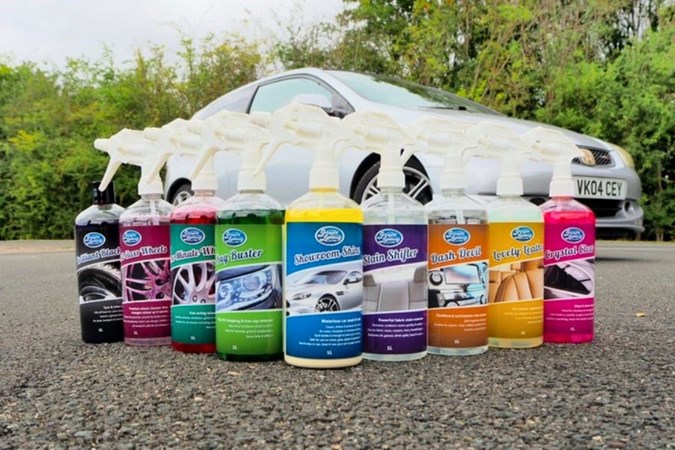
Pros
- Safer than an automated car wash
- Washes and waxes at the same time
- The gloss it left was nice and deep
Cons
- You'll need way more microfibres
- Heavily soiled cars will defeat the product
The best waterless wheel cleaner
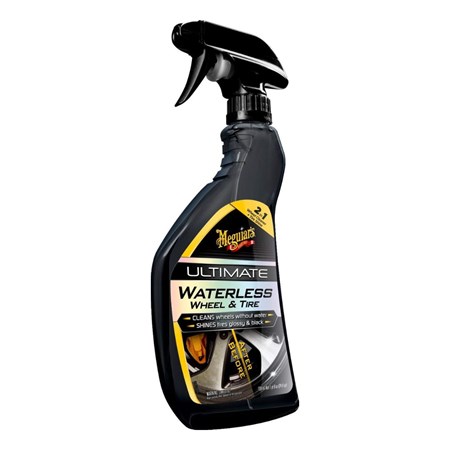

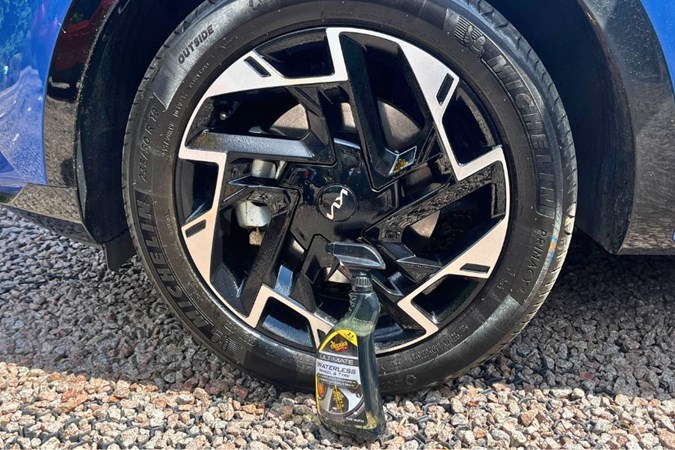
My testing with this spray was simultaneously infuriating and spectacular. On older, baked-on wheel dust, it didn't do much and won't be worth your cash. On a fresh wheel with lighter muck, it was awe-inspiring. The grime would be softened enough to wipe away after dwelling, and you'll be left with a sparkling wheel that's totally damage-free. The fact it'll also darken tyres only sweetens the deal.
Ryan Gilmore
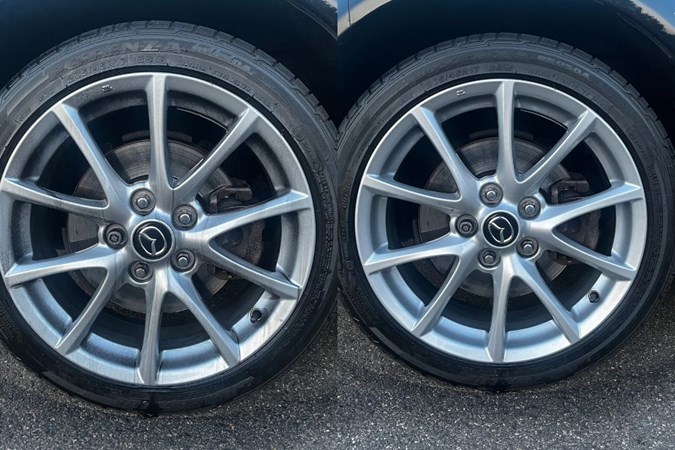
Pros
- Impressive performance for a waterless product
- Cleans tyres and wheels in one slick motion
- Lemon-scented makes it a joy to use
Cons
- You'll get through a decent amount to maintain the wheels
- Not one for baked-on grease
| Volume | 710ml |
| pH level | 7 |
| Recommended dwell time | N/A |
| Reactive to brake dust? | No |
| Consistency | Liquid |
Hosepipe ban care cleaning FAQs
-
Are car washes open during a hosepipe ban?
Hosepipe bans may temporarily forbid the use of hosepipes at home, but commercial car washes can remain open, giving motorists another option during the dry months. Commercial car washes, like the automated stations one might find at a garage, often recycle much of the water they use, offering a more sustainable approach to car washing.
-
How much could I get fined for breaking a hose pipe ban?
Not only will you get disgusted glances from the neighbours, anyone who breaks the hosepipe ban can face a fine of up to £1,000.
Sign up for the Parkers Newsletter to keep up to date with more of the latest reviews, news, and recommendations from the Parkers team.
Just so you know, we may receive a commission or other compensation from the links on this website - read why you should trust us.


